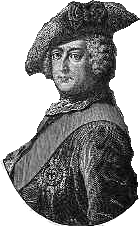|
|
||||||||
|
|
||||||||
|
|
||||||||||
Except for these defense preparations, also try to figure out where to put your offensive troops and how to proceed with an offence: go through the motions. It sounds okay when you decide to rocketjump with your assault team into the base, but practice doing this all at once and you'll see what I mean. Example: In an offensive in 2fort5 an assault team can rocketjump onto the sniperdeck, covering one spawn area and taking the enemies defense from the rear.All great commanders made bloody sure that they had maps for the area, so to know the terrain. Some even chose specific areas as battlefields. They all did this because they wanted to know everything about the area. 1.All great military commanders had an eye for environment and area. Make sure you get this "eye". The most effective way of getting it is to go with clan-members or your second in command-s outside. This may sound strange but the best way to practice is to go to a field or a city and just look around and discuss how you would go about an offensive action within this area. Discuss also how you would defend such an area. You will find that you will develop an automatic look on maps in TeamFortress (plus it is great fun, really). People like Frederic the Great, von Clausewitz, Sun Tzu made bloody sure they knew every patch of sand and tree of the area they would use for battle. 2.This looking at terrains, or maps in TeamFortress, should lead to a discussion with the team leadership on how you should go about an offence or defense within a certain area. Numbers should be fixed on this. For example: if you have a small room in a map, one good defender can usually defend it. If you have more than this, a well-placed nail-grenade could diminish your troops severely. 3.Take into account the limitations of the terrain: having a great offensive force standing in a place that they cannot leave but with difficulty is not the best thing to do. Your defense should use the area in such a way that the offence can be opened within seconds and without any difficulty. 4.The terrain of the map offers two advantages: 5.There are a controlled number of entries to the base/room/terrain. This number is usually between 1 and 4. This means that you have basically only one to four points to cover. If the area is consisting of more levels, it could be advisable to place a sentry. 6.How wonderful and impenetrable a terrain may be, the fact that you got there means that an enemy can get there. If it is really impossible to get there, the enemy in all possibility will just circumvent you, and in the best of cases ignore your position (In WWI this was known as the Sturm-tactics: take the enemy like a flood, and avoid difficult areas). Do not try to gain access to an unnecessary position. Your objective is to win, not to mop up all resistance. 7. Follow also the lesson of Alexander the Great: an enemy that hides in a defensive position is a weak enemy. He noted at several battles that some commanders tend to trust too much on �natural� features for their defense. This means that many commanders will not place a very strong guard at an entrance or exit which they think is un-attackable. Find the weaknesses, and attack there with all your force. More then once teams have left sniperdecks open to attack, because they thought it would be ludicrous to attack there. Using the full force of an offense it will result in you gaining a position in their base. |
